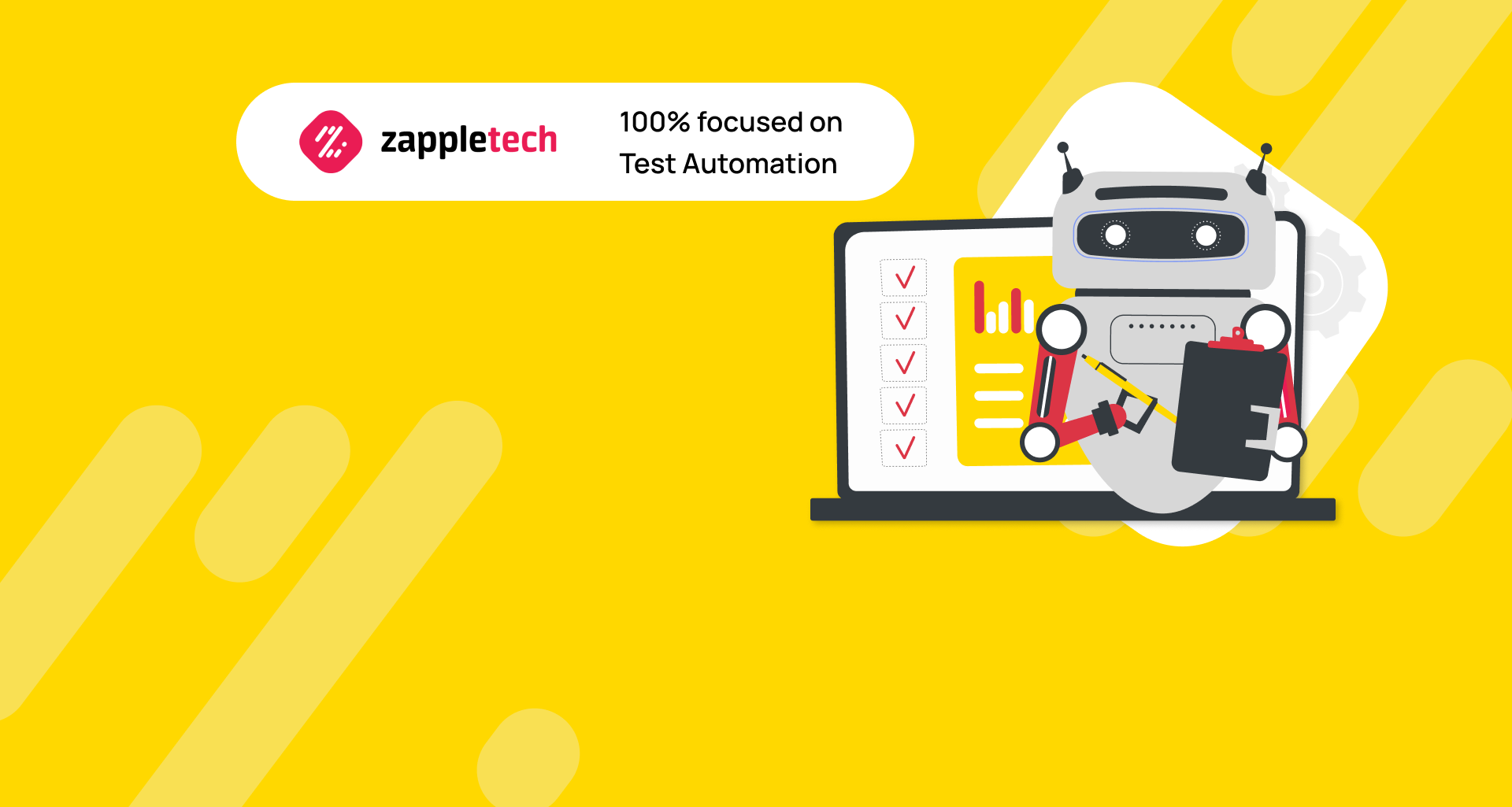Any correction made to the code may affect other parts of the product. Projects with low code and architecture quality, as well as with impressive technical debt, are especially susceptible to this problem. As far back as 1975, Frederick Brooks wrote in his book that fixing one mistake is likely to create a new one. According to him, this probability is in the range of 20-50%. Even today, in a technologically advanced world, a 0% chance of error cannot be guaranteed.
Begin by automating the most repetitive and time-consuming tests, then gradually expand as your team becomes more comfortable with the process.Mikhail BodnarchukCDO, ZappleTech Inc.
However, we are confident (and know from our own experience) that it is possible to ensure high quality through automated regression testing (ART). One of the key benefits of automated regression testing is its ability to quickly identify unintended consequences of code changes across the entire application. Unlike manual testing, which is time-consuming and prone to human error, automated tests can be executed repeatedly and consistently, ensuring that new bugs aren’t introduced during development. This consistency in checking code changes helps maintain product stability and reduces the risks associated with technical debt and low-quality code.
Additionally, automated regression testing improves productivity by allowing teams to focus on more complex issues rather than repetitive manual tests. This not only speeds up the release cycle but also ensures that even minor updates don’t cause large-scale issues elsewhere in the system. In this article, we will discuss the main advantages of this method, including how it contributes to long-term code quality and reduces maintenance costs.
Table of Contents
1. What is Automated Regression Testing
Automated regression testing (ART) is a crucial aspect of software quality assurance. It involves running tests on previously validated areas of a software solution after changes, such as updates to the code or environment, have been made. The goal is to ensure that the new version of the software remains stable and defect-free. These tests are essential when modifications like code updates, version upgrades (PHP, Java, MySQL, etc.), or transitions to new servers occur.
However, not all changes require immediate testing. Minor adjustments, such as text content changes on a website, may only need a quick review rather than a full regression test. In contrast, more significant modifications, like fixing serious bugs, integrating new functionality, or migrating databases, require comprehensive testing.
One of the key benefits of automated regression testing is its efficiency in handling frequent test executions, which saves time, resources, and minimizes human error. Manual regression testing can be error-prone and resource-intensive, especially for large projects. ART addresses these challenges by automating repetitive tasks, ensuring accuracy, and enabling teams to focus on more critical aspects of the project. Whether in finance, e-commerce, or education, ART plays a pivotal role in maintaining software stability across industries.
2. Best Practices of ART
When issues in a product arise unexpectedly, it can be frustrating, especially when a seemingly unrelated area is affected by changes made in another. This phenomenon is not uncommon, particularly in teams where multiple developers are working on the same project. With each release, the chances of regressions increase significantly, as the complexity of the codebase grows and new changes have unintended ripple effects.
Testers must remain vigilant, as even minor tweaks in the code can impact other functionalities. The key is to ensure that any modifications integrate seamlessly with the existing code. This is where automated regression testing (ART) becomes crucial. Manual testing is often too slow and cumbersome, particularly for larger projects with frequent updates. By adopting the best practices of automated regression testing, testers can accelerate their processes, ensuring that new changes don’t break existing functionality.
The benefits of automated regression testing are numerous. First, it saves time by running tests quickly and efficiently, allowing teams to detect issues early. Second, ART improves accuracy, as automated scripts are less prone to human error compared to manual testing. Finally, automated regression testing ensures consistent test coverage across the entire codebase, providing peace of mind that even minor changes won’t disrupt critical functionality.
By leveraging expert test automation techniques, teams can streamline their processes, reducing the likelihood of regressions and delivering more reliable products with each release.
Useful ART Practices:
- Implementing Test Management Software. Such tools offer a wide range of features for working with requirements, preparing test cases, tracking bugs, personalizing dashboards, customizing reports, and more.
- Maintaining a clear test schedule. It is important to stick to the original schedule throughout the project to achieve results. It will also help the team adapt to a regime where tests are performed regularly.
- Categorization. Experts recommend dividing the test suite into smaller categories. The tool chosen for management will simplify the classification. This will save testers the trouble of identifying test types.
- Creating a failed test. What to do if there is an unambiguous error in the code, but the test does not see it? One option is to write a new test that is known to fail.

These seemingly simple recommendations can simplify the work of the whole team. But to implement certain practices, you need to clearly understand why this should be done and what can be obtained. We have prepared a list of the main benefits of automated regression testing for each of you to explore the key features of the approach.
Six Reasons for Automated Regression Testing
Freeing Up Resources
The first reason for choosing automated regression testing (ART) for a project is to free up valuable resources. When a team transitions to automation, particularly in handling repetitive tasks like regression testing, it frees up time and manpower that can be better utilized elsewhere. This free time can be invested in more critical areas such as exploring innovative solutions, improving workflows, and addressing complex bugs. In the long run, this shift not only reduces the number of errors but also enhances product quality, ensuring that clients receive a first-class product. The benefits of automated regression testing also include increased efficiency and the ability to focus more on strategic improvements rather than routine tasks.
Getting feedback fast
One of the obvious test automation benefits is getting instant data. If testers practice the waterfall approach, regression testing (RT) is typically only conducted before a release, which can delay feedback. However, automated regression testing offers the advantage of speeding up the process by running tests continuously and iteratively. Automation enables an agile, iterative approach where testing and development can happen simultaneously. This way, teams get feedback fast, allowing for immediate identification of issues. The benefits of automated regression testing also include faster detection of bugs and quicker corrections, leading to a more efficient workflow and improved software quality.
24/7 Execution
Automation enables 24/7 test execution, ensuring continuous testing without human intervention. This is especially beneficial when tests are scheduled to run at any time, even during off-hours or overnight, which frees up valuable time for the team. The ability to run tests in the background ensures that no time is wasted waiting for results, and testers are immediately informed of any defects before the product reaches end users. Moreover, the benefits of automated regression testing include not only faster test cycles but also increased accuracy, as the tests are executed consistently and without the risk of human error.
Regularly review and update your automated regression tests to ensure they cover new features and evolving code, so nothing important slips through.Sergey AlmyashevCOO, ZappleTech Inc.
Scalability
Manual tests can be incredibly tedious, often requiring significant time and effort, which leaves little room for additional tests or in-depth research. As a result, there is a heightened risk of overlooking important details or missing critical bugs that could impact the overall quality Manual tests can be incredibly tedious, often requiring significant time and effort, which leaves little room for additional tests or in-depth research. As a result, there is a heightened risk of overlooking important details or missing critical bugs that could impact the overall quality of the final product.
One of the key benefits of automated regression testing is its ability to address these issues by offering continuous, streamlined processes that operate at a pace and frequency unmatched by manual testing. This level of automation not only ensures thorough testing but also allows for scalability. By automating repetitive and time-consuming tasks, teams can focus on more strategic activities, effectively scaling their processes without the need for additional costly resources, all while maintaining or even improving quality control.
Simplifying maintenance
As a product evolves with the addition of new functionalities during development, it requires continuous testing to ensure stability and performance after each modification. Naturally, this leads to an expanding set of tests that, over time, can become too complex to manage manually. This is where automated regression testing (ART) plays a crucial role.
One of the key benefits of automated regression testing is its ability to simplify the maintenance of these growing test suites. ART offers transparency, enabling tests to be configured without directly altering the code. This not only speeds up the servicing process but also reduces the chances of human error, making the overall testing process more efficient and sustainable.
Additionally, automated regression testing helps in keeping track of which tests have been conducted, ensuring that every component is re-evaluated after any changes. By simplifying maintenance, ART allows teams to focus on innovation rather than being bogged down by repetitive manual tasks.
Better situational awareness
Better situational awareness through automated regression testing expands the power of analytics, allowing testers to be more responsive when tests fail. Testers who employ this method are more attuned to the product’s status, making it easier to recognize issues and quickly identify their root causes. This heightened awareness enhances the speed and precision of defect resolution.
These are just a few of the benefits of automated regression testing. It helps teams achieve faster results with fewer resources, all while maintaining high standards of quality. By employing the right automation practices and strategies, testers can ensure long-term success without sacrificing efficiency.
Conclusion
In conclusion, automated regression testing offers several significant advantages that can transform the software development process. It ensures the early detection of bugs, minimizing the risk of introducing new defects into existing functionality. This approach leads to increased test coverage, enabling teams to cover more ground without the need for additional resources.
Automated regression testing is also a major contributor to time and cost savings, as repetitive test cases are executed more efficiently, freeing up developers and testers for more critical tasks. The consistency and reliability of automated tests ensure greater accuracy and precision, while the ability to run tests continuously provides enhanced scalability.
While automation is powerful, don’t rely on it entirely. Use manual testing for areas that require human intuition and creativity, alongside automated regression testing for the routine tasks.Mykhailo PoliarushCEO, ZappleTech Inc.
Finally, automated regression testing supports faster release cycles, allowing businesses to innovate and push updates more quickly, staying competitive in a dynamic market. Overall, it is a strategic investment that drives higher-quality software with reduced risk and faster delivery.







